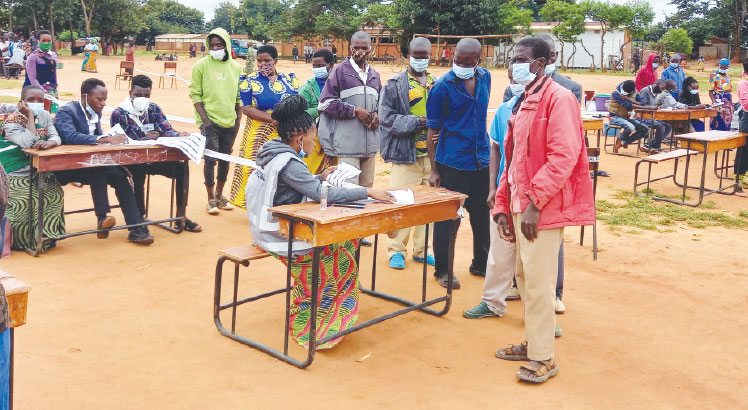Malnutrition rate up by 62%
Cases of children admitted with either severe or moderate acute malnutrition in the country’s health centres have increased from 43 891 to 71 019, representing a 62 percent jump in admissions over five months, compared to same period last year, United Nations Children’s Fund (Unicef) has said.
In a press statement released on Friday, Unicef deputy representative for Malawi Roisin De Burca said the unfolding nutrition crisis increases the likelihood of child rights violations, as many—especially the poor and vulnerable—are forced to join their families in search for food, which exposes them to child labour, exploitation and risk of trafficking.

The UN agency has just completed a mass screening of under-five children, and reached 1.3 million children across 25 districts of the country.
The campaign, which started in early November, targeted 1.8 million children.
“Unicef predicted this situation last year, that is why we have been carrying out the mass screening to go out and find children in the far flung villages and communities, to encourage those in need to seek services,” said De Burca.
She added that her organisation is working with government to ensure all facilities have the necessary therapeutic foods, milk and treatment to ensure that all those children recover.
With 6.5 million people, about a third of the population facing acute food shortage, Unicef has committed to continue vital nutrition support for the country’s 300 000 children who are at risk of malnutrition.
“We are monitoring the situation closely as we do not foresee an end to this crisis any time soon. As time goes on we know the challenges for children are not only malnutrition, but school drop-out and risks such as hazardous labour and early marriage. Our response to this emergency is looking at all these risks to children, and trying to find ways to ensure they stay healthy and stay in school,” said De Burca.
She said currently, Unicef in collaboration with the Ministry of Health has managed to procure and distribute 534 tonnes of Ready to Use Therapeutic Food (RUTF) for all health centres in the country with support from UK’s Department for International Development (DfID), Swiss National Committee for Unicef and the Government of Japan.
De Burca said the UN children’s agency is calling for additional funds of $18.2 million (about K13 billion) for its current emergencies in the country.
In Malawi, severe acute malnutrition (SAM) in the under-five population is around four percent, although there are discrepancies across the country, with the flood affected districts in the South currently showing much higher rates.
Without treatment, severe acute malnutrition can be fatal for young children.
During budget analysis on June 13, Civil Society Organisations Nutrition Alliance (Csona) board chairperson Catherine Mkangama urged members of Parliament from the Health, HIV and Nutrition Cluster Committee to increase the nutrition budget line, as under nutrition remains high in the country.
In the 2016/17 budget, K 338 million was allocated to nutrition, translating to K268 per stunted child per year.





